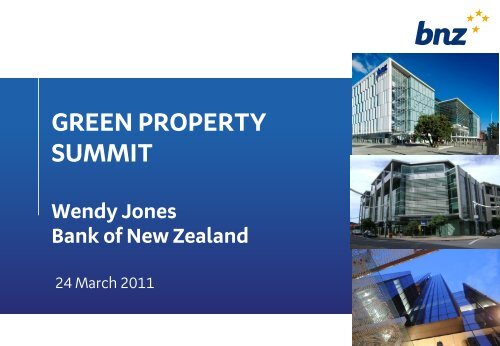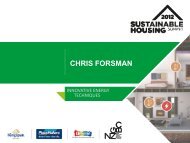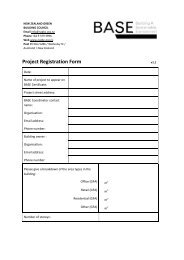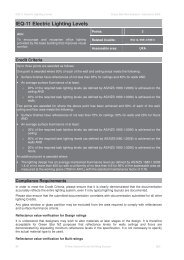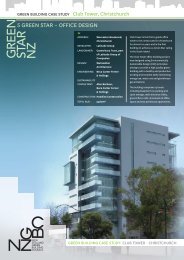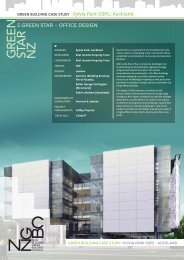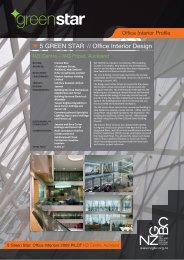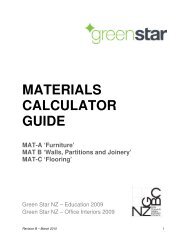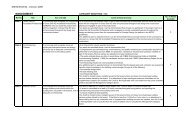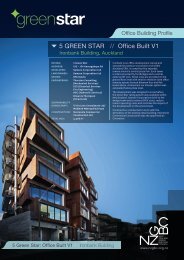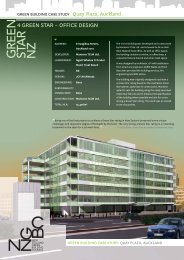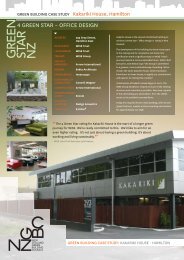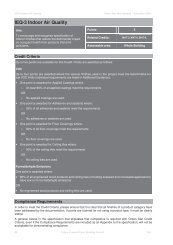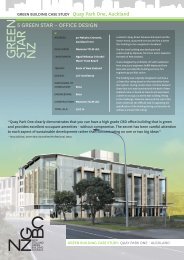GREEN PROPERTY SUMMIT Wendy Jones Bank of New Zealand
GREEN PROPERTY SUMMIT Wendy Jones Bank of New Zealand
GREEN PROPERTY SUMMIT Wendy Jones Bank of New Zealand
You also want an ePaper? Increase the reach of your titles
YUMPU automatically turns print PDFs into web optimized ePapers that Google loves.
Be a part <strong>of</strong> the rule making process!NEW YORK STATEREGISTERThe public is encouraged to comment on any <strong>of</strong> the proposed rules appearing in this issue. Commentsmust be made in writing and must be submitted to the agency that is proposing the rule. Address your commentsto the agency representative whose name and address are printed in the notice <strong>of</strong> rule making. Nospecial form is required; a handwritten letter will do. Individuals who access the online Register(www.dos.ny.gov) may send public comment via electronic mail to those recipients who provide an e-mail addressin Notices <strong>of</strong> Proposed Rule Making. This includes Proposed, Emergency Proposed, Revised Proposedand Emergency Revised Proposed rule makings.To be considered, comments must reach the agency before the proposed rule is adopted. The lawprovides for a minimum 45-day public comment period after publication in the Register <strong>of</strong> every Notice <strong>of</strong>Proposed Rule Making for which full text was included or posted on a state web site, or which is a consensusrule or a rule defined in SAPA § 102(2)(a)(ii); a minimum 60-day public comment period after publication inthe Register <strong>of</strong> a Notice <strong>of</strong> Proposed Rule Making for which a summary <strong>of</strong> the text <strong>of</strong> the rule was included inthe Notice and the full text <strong>of</strong> which was not published on a state web site; and a 30-day public comment periodfor every Notice <strong>of</strong> Revised Rule Making. If a public hearing is required by statute, public comments areaccepted for at least five days after the last such hearing. Agencies are also required to specify in each noticethe last date on which they will accept public comment.When a time frame calculation ends on a Saturday or Sunday, the agency accepts public commentthrough the following Monday; when calculation ends on a holiday, public comment will be accepted throughthe following workday. Agencies cannot take action to adopt until the day after public comments are due.The Administrative Regulations Review Commission (ARRC) is charged with the task <strong>of</strong> reviewingnewly proposed regulations to examine the issues <strong>of</strong> compliance with legislative intent, impact on theeconomy, and impact on affected parties. In addition to sending comments or recommendations to the agency,please do not hesitate to transmit your views to ARRC:Administrative Regulations Review CommissionState CapitolAlbany, NY 12247Telephone: (518) 455-5091 or 455-2731---------------------------------------------------------------------------------------------------------Each paid subscription to the <strong>New</strong> York State Register includes one weekly issue for a full year and four“Quarterly Index” issues. The Quarterly is a cumulative list <strong>of</strong> actions that shows the status <strong>of</strong> every rule makingaction in progress or initiated within a calendar year.The Register costs $80 a year for a subscription mailed first class and $40 for periodical (second) class.Prepayment is required. To order, send a check or money order payable to the NYS Department <strong>of</strong> State to thefollowing address:NYS Department <strong>of</strong> StateOne Commerce Plaza99 Washington AvenueSuite 650Albany, NY 12231-0001Telephone: (518) 474-6957
The light we see, the air we breatheManagement Systems Correctly commissioned heating, ventilation, coolingand lighting systems Multiple reporting systems Comprehensive building management system Recycling <strong>of</strong> waste with multiple reportingEnergy Deep natural light penetration Movement sensor lights Energy efficient appliances4
The light we see, the air we breatheMaterials Sustainable timber used Victorian Ash and Bamboo Environmentally friendly floor coverings including basalt, recycledcarpet, recycled rubber flooring Low VOC adhesives and sealants Environmental Choice paint and gib lining Use <strong>of</strong> wool fabrics and acoustic absorbent panelling PVC free blinds and window film Eco-hush foam in atria ro<strong>of</strong>, cantilever meeting room slab s<strong>of</strong>fits,balustrades7
The light we see, the air we breatheTransport Close to city bus and train transport hub Car pooling Motorcycle free parking Secure bike cage, lockers and showersEmissions Environmentally friendly refrigerants and insulation Hi-tech monitoring systems including CO2 air quality8
What WorksWhat Doesn’t9
What Works, What Doesn’tManagement Systems Comprehensive building management system✕ Reporting language✕ Fine tuning Green Leases and Contracts✕ Interpretation from both Landlord and Tenant✕ Green Star Design vs Built vs Interior vs Performance10
Kg Waste / FTERecycling RateWaste Generation and RecyclingJun Jul Aug Sep Oct Nov Dec Jan Feb Mar Apr May
What Works, What Doesn’tEnergy Deep natural light penetration Movement sensor lights Zoned dimmable lights✕ Energy efficient appliances✕ Compliant dishwashers✕ Day Cleaners✕ Building co-tenant not green aligned12
EnergyWhat Works, What Doesn’tEstimated energy consumption prior to buildCurrent annual electrical energy consumptionCurrent annual gas consumptionCurrent total consumptionEECA low-usage benchmarkCurrent best practice in CBD range170 kW/hr/m²/yr146 kW/hr/m²/yr103 kW/hr/m²/yr249 kW/hr/m²/yr200-280 kW/hr/m²/yr140-180 kW/hr/m²/yr13
kWh / FTEElectricity Consumption / FTEMar Apr May Jun Jul Aug Sep Oct Nov Dec Jan Feb
What Works – What Doesn’tIndoor Environment Quality Positive impact to staff and customers – brand, pr<strong>of</strong>ile, CSR Other BNZ branches and partner centres will now follow the newsustainable design and principles <strong>New</strong> working practices increased integration, flexibility andknowledge transfer Improved sustainability, increased recycling, paperless <strong>of</strong>fice,Carbon Neutral September 2010 Industry recognition with 5 Star Green Star ratings and manyindustry awards The building environment is the key enabler in workplaceefficiency15
Staff Satisfaction Survey– Pre and Post Building Occupation16
What Works – What Doesn’tWater Rain water harvest to large collection tank, filtered for re-use influshing systems Hi-tech water metering Low flow showers✕ Low volume and dual flush toilets✕ Waterless urinals17
What Works – What Doesn’tMaterials Environmentally friendly floor coverings including basalt, recycledcarpet, recycled rubber flooring Use <strong>of</strong> wool fabrics and acoustic absorbent panelling PVC free blinds and window film✕ Sustainable timber used Victorian Ash and Bamboo✕ Low VOC adhesives and sealants✕ Environmental Choice paint and gib lining18
Lessons Learnt19
Lessons LearntGreen leasing responsibilities are better understoodResearch, analyse and fully understand green buildingcomplexitiesBe very clear on internal business structure and requirementsBMS sophistication, monitoring and reportingInvolve Facility Management early for seamless project handoverProcurement and supplier alignment to green contractsWear and tear on sustainable productsContinuing research, education, training and implementationThis is serious business, not for faint hearted


